RM23M9A
Well-Known Member
Then, there's this mess.. What is the IDEAL Alternator and V.Regulator to have with Elect Ignition now? Hell I'm 50. This was never really a problem.
Whoever performed the wiring in the pix, should also consider fixing shoes.....as in what a shoemaker's job...not exactly what the pix is showing or is supposed to be shown...other than how not to connect wires.
Looks like your car would be a good candidate for a new engine side wire harness.
Looks like your car would be a good candidate for a new engine side wire harness.
Whoever performed the wiring in the pix, should also consider fixing shoes.....as in what a shoemaker's job...not exactly what the pix is showing or is supposed to be shown...other than how not to connect wires.
Just my opinion of course.
BOB RENTON
Whoever performed the wiring in the pix, should also consider fixing shoes.....as in what a shoemaker's job...not exactly what the pix is showing or is supposed to be shown...other than how not to connect wires.
Just my opinion of course.
BOB RENTON
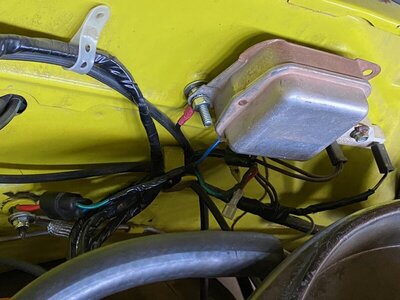
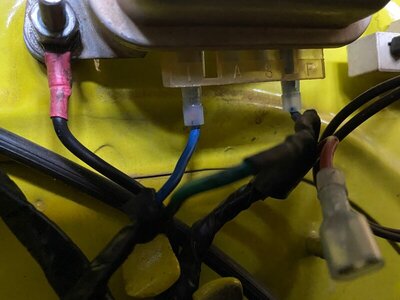
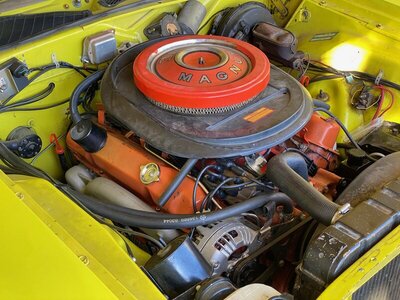
Check out this harness connector under the dash, above the throttle pedal.. I had to wiggle this around to just the right position so my gauges work. The side of the connector with the blue wire won't seat as far down as the other side. When I went to start the engine Monday, the gauges weren't working. Disconnecting and reconnecting this connector, several times and moving it around, got them working again.Wow! At least we CAN yank all of that crap out of there and replace it with all new OEM type wiring. The Electronic Ign. Part, is debatable, some harnesses want your to ADD a second harness for the ECU, then there is a harness set up for 70 and newer. Ive seen worse!
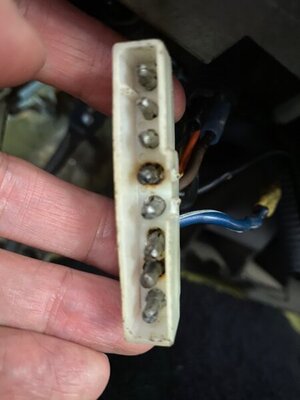
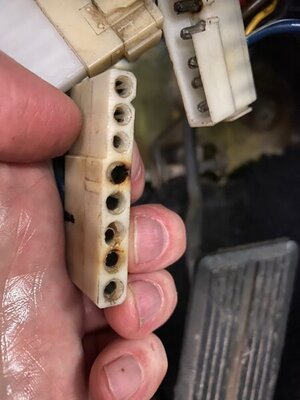
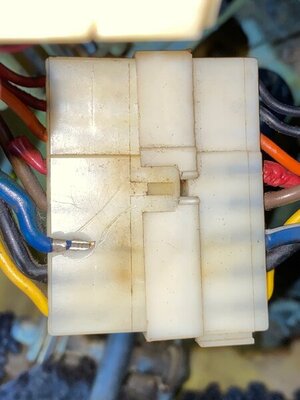
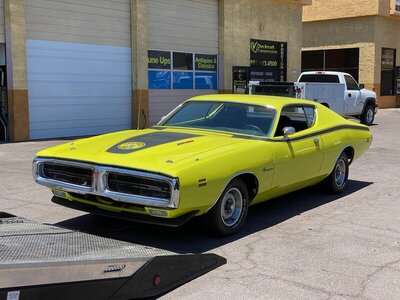
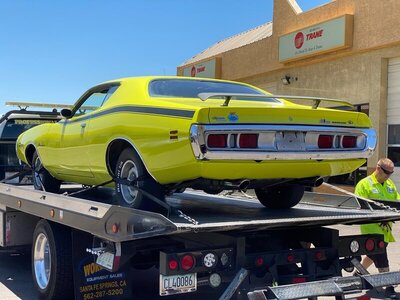
I was reading these older post looking for a reference for smaller alternator pully, any chance you have any info on the one you have. After countless hours of searching internet I can't find one. So in the true spirit of our hobby if you can't find one, make one! I ordered a smaller pully, and a brass bushing, now i need to drill out pully, insert bushing then drill bushing to correct size. I would rather buy one and avoid all my chances of messing it up.I took mine to a local alternator shop and it tested fine, put a smaller pully on it and it produced 14 volts at 750 rpm.
That was quite a few years ago.
Thats actually a simple fix.Check out this harness connector under the dash, above the throttle pedal.. I had to wiggle this around to just the right position so my gauges work. The side of the connector with the blue wire won't seat as far down as the other side. When I went to start the engine Monday, the gauges weren't working. Disconnecting and reconnecting this connector, several times and moving it around, got them working again.
Sometimes project cars don't look like project cars. Take this Super Bee for example. The junk yard looking wiring connector you see is actually inside it, along with the Ford voltage regulator. I wonder if it is the original 49+ year old connector.. Been working on this car on weekends now for over 5 months. Those photos were taken 2 weeks ago, it looked exactly the same 5 months ago. I debated about buying this car for 8 months, before finally pulling the trigger on it. I knew it would need work but NOT as much work as I've put into it, and there is still a ton of **** to do to it, to make it an actual car, that you can sit in and drive it around on roads, and do things with it that people would expect a car to do.
You people on here that work on those Basket Case Eternal Project cars that need EVERYTHING rebuilt on them and look like they have been rotting in a field for 50 years, you guys must be very brave and have an enormous amount of patience. I could not handle a car like that.. If I was given one of those for free, even if it was a Hemi car, I would decline to accept it. This one I have is overwhelming enough for me.
View attachment 975340 View attachment 975341 View attachment 975342 View attachment 975343 View attachment 975344
Ya know, R&R-ing dash & engine harnesses did help, found out MY problem, was the CRAP Chinese alternator, the FIELD Terminal brush had a STEEL WASHER between the spade terminal and the housing, causing a short to ground anytime car was running. I simply REPLACED the Communist washer with a PLASTIC one from an E Bay seller, thing maintains 12.6 V like a champ from April 26 1969 !Looks like your car would be a good candidate for a new engine side wire harness.
I just measured the pulley it's 2 and 3/4 inches overall diameter, can't remember what the old one was. The alternator shop just had these things laying around so I couldn't tell you model number, I was there no more than 20 minutes and walked out with a new pully on my alternator, if I remember correctly I think I paid $25I was reading these older post looking for a reference for smaller alternator pully, any chance you have any info on the one you have. After countless hours of searching internet I can't find one. So in the true spirit of our hobby if you can't find one, make one! I ordered a smaller pully, and a brass bushing, now i need to drill out pully, insert bushing then drill bushing to correct size. I would rather buy one and avoid all my chances of messing it up.
IMO...Just got word we have a place like that here in VA Beach, gonna go check that out Monday. My pulley is 2 3/4, looking for 2 1/2, I just need a hair more rpm at idle and I'll be able to be at a red light at night, a/c going, fuel pump running and not have to put it in neutral to keep everything running. Thanks for the reply, I'll post my results
Question: If you use a slightly smaller pulley can the alternator 'over rev" at high engine rpm?
I've thought myself of changing the pulley to smaller one (pitch diameter of course), but wondered what effect it might have at high revs, as it's obviously spinning much faster than the engine and the extra engine revs would be multiplied by whatever factor the smaller pulley gives.
If there is no issue then why don't they put a smaller pulley on to begin with?
